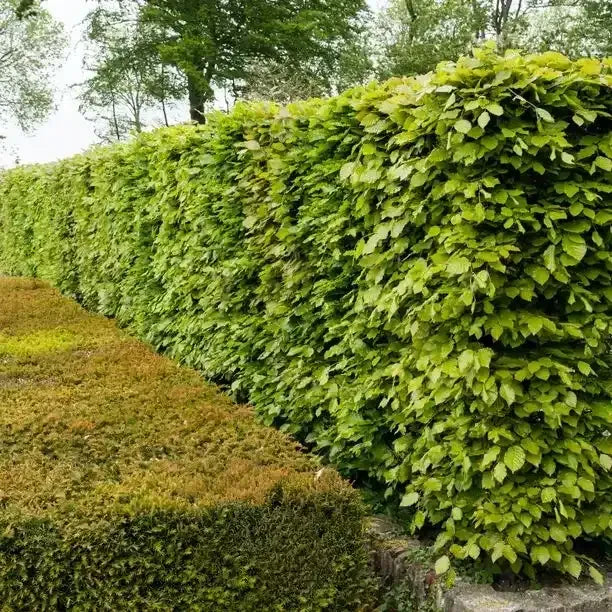Why Clay Soil is Special
- Most soils are aquiferous: water can flow through them quite freely.
- When you observe a puddle on most soil types during heavy rain, it will disappear almost as soon as the rain stops.
- But thick, heavy “potter’s clay” soil is aquitard: water only seeps through it slowly.
- When you observe a puddle on heavy clay during heavy rain, it might remain for over 24 hours after the rain stops.
Soil compaction tends to be worse on heavy clay, so breaking up the soil to a good fork’s depth at the bottom of the planting hole is often very beneficial, as is working over a larger area than strictly necessary for the planting hole.
- However, clay soil should not be worked when it is wet and sticky in Winter, partly because it’s very difficult, and partly because you force all the air out, and then it turns into a brick when it dries. In general, avoid walking on clay soil beds in Winter.
- So, ideally prepare it early (Autumn or early Winter during dry weather) by digging over a good size area around the intended planting site.
If you miss the opportunity and have to plant in Winter with no prior preparation, it is better to simply dig a hole big enough for the roots and pack the clay back in, without struggling to work over a larger area.
- An empty planting hole in clay is like a sink that will fill up with rainwater. If you add a lot of organic matter to the backfill, you are creating a sort of sponge that most plant roots (roses are a prime example, which love clay soil) won’t like: it’s too wet, and the soil may not be firm enough to support the roots in windy conditions. It can also create a situation where the roots fill the improved soil in the hole as if it were a pot, and don’t penetrate into the surrounding soil, which is bad!
Improving Clay Soil Options
Improving Planting Holes VS an Entire Bed / Garden
If you are improving an entire bed or other large area, especially with the help of machinery, then it makes sense to dig organic matter into the whole section, as it won’t be trapping the moisture in one pocket as it would in a single planting hole or trench.
This is a common practice for making vegetable beds on clay soil, where the aim is to raise the whole bed several inches in order to improve drainage, and help the bed to warm up in Spring.
There is also no point in using clay improvers for clay soil on a small scale: it’s a waste of your money.
Clay improvers are either gypsum based for neutral to alkaline soils, or you would use lime for acidic clay soils.
As with digging in organic matter, it might make sense to use these for an entire raised bed where you will grow prize vegetables, but otherwise they are either unnecessary or plain pointless.
Mixing in grit and sharp horticultural sand (not smooth building sand) is neither practical nor recommended. You have to use tonnes of the stuff to have any effect out in the garden, and it makes the soil prone to erosion.
Grit and sharp sand are useful for turning heavy clay into a potting medium for containers – one half clay, one quarter small grit & sharp sand, and one quarter compost makes a good, inexpensive potting mix.
Improving the garden’s drainage is work best left to landscape professionals.
How to Plant Hedging on Poorly Drained Soils
Yew is the prime example of a hedge plant that will grow in damp soils, but hates being transplanted into soggy soil.
- Almost all plants hate having their roots permanently in water: they can’t breathe, and literally drown.
- This is especially so with newly planted stock, producing sensitive new roots.
If you dig a hole in heavy clay and fill it with good soil/compost, you have effectively created a non-draining bowl or trench and put a sponge in it: very bad for new plants, especially Yew.
Therefore, your best option is to start with smaller plants, and use the slit planting method as you would with country hedging; note that you don’t hard prune Yew or Beech after planting as you would with native hedging like Hawthorn.

 Secure, One-Tap Checkout
Secure, One-Tap Checkout
 Hand Picked, Delivered to Your Door!
Hand Picked, Delivered to Your Door! 1 Year Bareroot Guarantee
1 Year Bareroot Guarantee